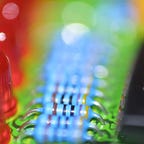Types of SMD Components and How to Identify Them
Introduction:
Surface Mount Device (SMD) components are miniature electronic parts that play a crucial role in modern electronics manufacturing. These components are soldered directly onto the surface of printed circuit boards (PCBs), eliminating the need for holes and leads traditionally used in through-hole components. Identifying various types of SMD components is essential for troubleshooting, repairing, and designing electronic circuits. In this guide, we’ll explore common SMD components and how to identify them.
I. Passive SMD Components:
1.Resistors (SMD Resistors):
- Appearance: Rectangular or cylindrical, often with a three-digit code.
- Color codes: Some may have color codes, but the majority have printed values.
- Identification: Read the printed resistance value in ohms (Ω) or use a multimeter for measurement.
2. Capacitors (SMD Capacitors):
- Appearance: Rectangular or cylindrical, with markings indicating capacitance value and voltage rating.
- Markings: The markings typically include a three-digit code for capacitance and voltage ratings.
3. Inductors (SMD Inductors):
- Appearance: Small cylindrical components with markings indicating inductance value.
- Markings: Similar to capacitors, inductors have markings showing their inductance in microhenries (μH).
II. Active SMD Components:
1. Diodes (SMD Diodes)
- Appearance: Small, flat, rectangular packages with polarity markings.
- Identification: Check for polarity markings, such as a stripe indicating the cathode side.
2. Transistors (SMD Transistors):
- Appearance: Flat, three-legged components with alphanumeric markings.
- Markings: Transistors have markings indicating the part number, type (NPN or PNP), and sometimes the gain or voltage ratings.
3. Integrated Circuits (SMD ICs):
- Appearance: Rectangular packages with various pin counts.
- Identification: Refer to the part number and datasheet to determine the IC’s functionality.
III. Specialized SMD Components:
1. Surface Mount LEDs (SMD LEDs):
- Appearance: Small, flat, rectangular or round packages with polarity markings.
- Identification: Polarity markings and package shape help identify the LED type (e.g., common anode or common cathode).
2. Surface Mount Fuses (SMD Fuses):
- Appearance: Rectangular packages with voltage and current ratings.
- Identification: Check for voltage and current ratings printed on the fuse body.
3. Surface Mount Varistors (SMD Varistors):
- Appearance: Cylindrical components with voltage and current ratings.
- Identification: Voltage and current ratings are typically printed on the varistor body.
IV. How to Identify SMD Components:
- Use a Magnifying Glass or Microscope: Many SMD components are tiny, so a magnifying glass or microscope can help you examine markings and features more closely.
- Datasheets: Whenever possible, refer to the component’s datasheet, which provides detailed information about its specifications, pinout, and recommended usage.
- Markings and Codes: Pay attention to any alphanumeric codes, symbols, or markings on the component. These often indicate the component’s value, type, and sometimes the manufacturer.
- Online Resources: There are online databases and tools that can help you decode SMD component markings and identify their characteristics.
- Multimeter Testing: Use a multimeter in diode mode to check the polarity and basic functionality of diodes, transistors, and some other components.
- Visual Inspection: Compare the physical characteristics, such as size, shape, and markings, to reference guides or datasheets to identify the component.
Conclusion:
Identifying SMD components is an essential skill for anyone involved in electronics, from hobbyists to professionals. This guide has introduced common types of SMD components and provided tips on how to identify them based on their appearance, markings, and specifications. Whether you’re repairing a circuit board or designing a new electronic project, knowing your SMD components is crucial for success in the world of modern electronics.
